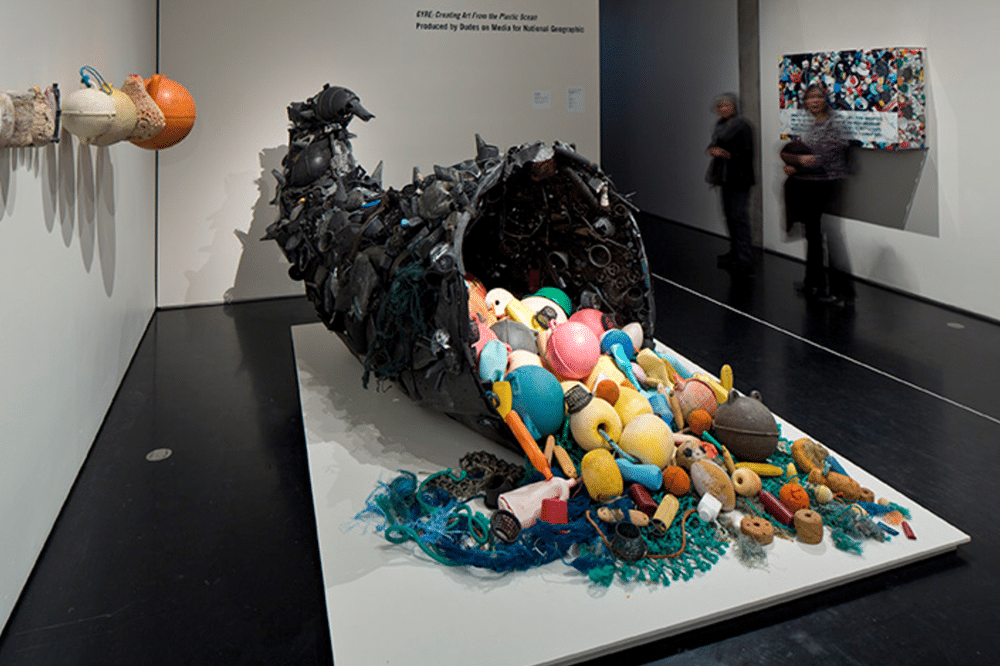
From Paper to Polymers: How Sustainable Materials Inspire Modern Art & Literature
Introduction
Art and literature have always been mirrors of society. From the cave paintings of early humans to the digital poetry slams of today, creative expression evolves alongside cultural, social, and technological change. In 2025, one of the most urgent themes inspiring artists and writers worldwide is sustainability.
Climate change, environmental degradation, and overconsumption are not just political or scientific issues—they are deeply human challenges that shape how we live, think, and create. For poets, novelists, sculptors, and painters, sustainability has become both subject matter and a practical necessity in their work.
Traditional creative mediums—from paper-heavy publishing to petroleum-based paints and plastics—carry heavy environmental costs. As awareness grows, artists and writers are rethinking their materials, moving toward eco-friendly alternatives that reduce waste while expanding creative possibility. One striking example is the adoption of innovative polymers like polyvinyl alcohol (PVA), used in adhesives, coatings, and mixed-media projects. Companies like Kuraray Poval are leading the way in developing these versatile, sustainable materials that give artists new textures, strength, and creative flexibility.
This article explores the growing intersection between sustainability and creativity—how eco-friendly materials are influencing the art world, inspiring literary movements, and shaping the future of human expression.
1. The Environmental Cost of Traditional Art Materials
Art and literature may appear gentle on the planet, but their impact is significant.
- Paper Waste in Publishing: The global publishing industry consumes over 32 million trees annually, much of it for books and magazines that may never be sold.
- Toxic Paints & Resins: Oil paints and synthetic resins release harmful chemicals into the environment.
- Plastics in Art Supplies: Acrylic paints, plastic canvases, and resin-based sculptures often leave non-biodegradable waste.
- Energy-Intensive Printing: Conventional printing presses rely on fossil fuels and non-recyclable inks.
As environmental awareness grows, creatives are rethinking their materials as much as their messages.
2. Sustainable Paper & Publishing
Publishing is undergoing a green revolution.
Recycled Paper
More publishing houses are switching to post-consumer recycled paper, reducing deforestation and lowering the carbon footprint of books.
Eco-Friendly Inks
Vegetable-based and water-based inks replace petroleum-based inks, reducing chemical runoff.
Digital Publishing
E-books, audiobooks, and digital magazines drastically reduce paper demand. While not carbon-free (servers and devices consume energy), digital literature lowers the industry’s reliance on logging and shipping.
Example: Independent presses like Chelsea Green Publishing now operate as carbon-neutral companies, proving sustainability is possible in print.
See also: Treatment Pathways for Neuropathy: Medications, Therapies, and Lifestyle Adjustments
3. Polymers & Eco-Friendly Materials in Art
The world of visual art is also evolving with sustainable materials.
Biodegradable Plastics in Sculptures
Sculptors increasingly use bioplastics that break down naturally, reducing waste after installations are dismantled.
Eco-Friendly Resins
Traditional epoxy resins are toxic and non-recyclable. New bio-resins made from natural oils provide safe, durable alternatives.
PVA in Artistic Innovation
Polyvinyl alcohol (PVA) is a water-soluble, biodegradable polymer that offers unique creative opportunities. It is used in:
- Adhesives for bookbinding, canvas stretching, and collage.
- Coatings for eco-friendly finishes on artworks.
- Textiles & Mixed Media for durability and flexibility.
By integrating PVA into art supplies, creators enjoy the same strength as traditional materials while reducing their ecological footprint.
4. Green Inspirations in Poetry & Literature
Sustainability doesn’t stop at materials—it also inspires content.
Eco-Poetry
A growing movement where poets highlight environmental themes, climate grief, and nature’s resilience.
Examples:
- Mary Oliver’s nature poetry influencing a new generation.
- Contemporary eco-poets writing about climate migration, plastic pollution, and rising seas.
Climate Fiction (Cli-Fi)
Novelists explore dystopian futures shaped by climate change. Margaret Atwood, Kim Stanley Robinson, and many others fuel this genre.
Sustainability in Literary Themes
Writers are addressing overconsumption, pollution, and humanity’s place in nature—expanding literature’s role in cultural transformation.
5. Artists Leading the Eco-Art Movement
Artists worldwide are embracing sustainability as a medium of protest and innovation.
- Recycled Art Installations: Using ocean waste and scrap metal to create large-scale works.
- Street Murals with Eco-Paints: Biodegradable, non-toxic paints are now common in public art.
- Upcycled Materials in Galleries: Artworks made entirely from discarded electronics or textiles.
Case Study: Olafur Eliasson’s ice block installation in London (2018) brought melting Arctic ice to city streets, forcing viewers to confront climate change physically.
6. Libraries, Bookstores & Green Publishing
Community spaces are also rethinking their role.
- Sustainable Libraries: Some libraries are powered by solar energy and use recycled materials for interiors.
- Bookstores Going Green: Many independent bookstores now source only eco-certified books.
- Carbon-Neutral Publishing Houses: More publishers commit to offsetting emissions through reforestation and renewable energy investments.
7. Consumer Role in Eco-Literature
Readers and art collectors play a major part in the shift:
- Buying Secondhand Books: Extends the lifecycle of paper.
- Supporting Sustainable Publishers: Ensures eco-friendly practices thrive.
- Eco-Conscious Collectors: Invest in art that uses recycled or biodegradable materials.
Cultural demand drives economic change—when audiences choose sustainable options, industries follow.
8. Challenges in Eco-Art & Literature
Despite progress, hurdles exist:
- Cost: Eco-friendly materials often cost more.
- Resistance from Traditionalists: Some argue eco-materials lack the same quality.
- Greenwashing: Companies may falsely market their products as sustainable.
- Access: Smaller artists and writers may lack funding for eco-materials.
Overcoming these challenges requires education, funding, and innovation.
9. The Future of Sustainable Creativity
Looking ahead, sustainability will define creativity:
- AI-Assisted Eco-Art: Algorithms designing waste-free creative processes.
- Smart Materials: Interactive polymers that change with light or heat.
- Biodegradable Book Covers: Using PVA-based coatings and natural fibers.
- Circular Economy in Publishing: Books designed to be recycled indefinitely.
By 2035, experts predict most major publishing houses and art institutions will operate carbon-neutrally.
Conclusion
Art and literature are powerful tools of transformation, and in 2025, they are turning their gaze toward sustainability. From recycled paper and eco-poetry to biodegradable resins and polymer innovations, creativity is being redefined through an ecological lens.
Materials like PVA prove that innovation can serve both artists and the planet, providing strength, flexibility, and biodegradability. As poets, painters, and publishers embrace eco-conscious choices, they remind us that sustainability is not just about survival—it’s about reimagining beauty itself.
The future of creativity will be green, resilient, and profoundly human.
FAQs
1. What is eco-art?
Art created using sustainable materials or addressing environmental themes.
2. How is the publishing industry going green?
Through recycled paper, eco-friendly inks, and digital publishing.
3. What role does PVA play in art?
PVA is used in adhesives, coatings, and mixed-media projects, offering eco-friendly durability.
4. What is eco-poetry?
A literary movement focusing on environmental themes, climate grief, and nature’s beauty.
5. Are eco-materials as durable as traditional ones?
Yes, many new sustainable polymers and resins provide equal or better durability.
6. How can readers support sustainable literature?
By buying from eco-conscious publishers, choosing e-books, and supporting secondhand markets.
7. What challenges exist in eco-art?
High costs, resistance from traditionalists, and greenwashing claims.
8. What does the future of sustainable creativity look like?
Smart eco-materials, AI-assisted art, and carbon-neutral publishing.




